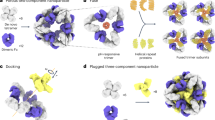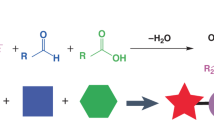Abstract
The intravenous delivery of plasmid DNA complexed with either cationic lipids (CL) or polyethyleneimine (PEI) enables high levels of foreign gene expression in lung. However, these cationic DNA complexes cause substantial toxicity. The present study found that the inclusion of polyacrylic acid (pAA) with DNA/polycation and DNA/CL complexes prevented the serum inhibition of the transfection complexes in cultured cells. The mechanism mediating this increase seems to involve both particle size enlargement due to flocculation and electrostatic shielding from opsonizing serum proteins. The use of pAA also increased the levels of lung expression in mice in vivo substantially above the levels achieved with just binary complexes of DNA and linear PEI (lPEI) or CL and reduced their toxicity. Also, the use of a ‘chaser’ injection of pAA 30 min after injection of the ternary DNA/lPEI/pAA complexes further aided this effort to reduce toxicity while not affecting foreign gene expression. By optimizing the amount of pAA, lPEI, and DNA within the ternary complexes and using the ‘chaser’ injection, substantial levels of lung expression were obtained while avoiding adverse effects in lung or liver. These developments will aid the use of cationic DNA complexes in animals and for eventual human gene therapy.
This is a preview of subscription content, access via your institution
Access options
Subscribe to this journal
Receive 12 print issues and online access
$259.00 per year
only $21.58 per issue
Buy this article
- Purchase on Springer Link
- Instant access to full article PDF
Prices may be subject to local taxes which are calculated during checkout












Similar content being viewed by others
References
Wolff JA, Budker VG . Cationic lipid-mediated gene transfer. In: RE Sobol, KJ Scanlon (ed). The Internet Book of Gene Therapy, Cancer Therapeutics. Appleton and Lange: 1995, pp 65–73.
Kircheis R, Wightman L, Wagner E . Design and gene delivery activity of modified polyethylenimines. Adv Drug Deliv Rev 2001; 53: 341–358.
Goula D et al. Polyethylenimine-based intravenous delivery of transgenes to mouse lung. Gene Ther 1998; 5: 1291–1295.
Bragonzi A et al. Biodistribution and transgene expression with nonviral cationic vector/DNA complexes in the lungs. Gene Ther 2000; 7: 1753–1760.
Wightman L et al. Different behavior of branched and linear polyethylenimine for gene delivery in vitro and in vivo. J Gene Med 2001; 3: 362–372.
Bragonzi A et al. Comparison between cationic polymers and lipids in mediating systemic gene delivery to the lungs. Gene Ther 1999; 6: 1995–2004.
Goula D et al. Rapid crossing of the pulmonary endothelial barrier by polyethylenimine/DNA complexes. Gene Ther 2000; 7: 499–504.
Chollet P et al. Side-effects of a systemic injection of linear polyethylenimine–DNA complexes. J Gene Med 2002; 4: 84–91.
Tousignant JD et al. Comprehensive analysis of the acute toxicities induced by systemic administration of cationic lipid:plasmid DNA complexes in mice. Hum Gene Ther 2000; 11: 2493–2513.
Escriou V et al. Cationic lipid-mediated gene transfer: effect of serum on cellular uptake and intracellular fate of lipoamine/DNA complexes. Biochim Biophys Acta 1998; 1368: 276–288.
Plank C, Mechtler K, Szoka Jr FC, Wagner E . Activation of the complement system by synthetic DNA complexes: a potential barrier for intravenous gene delivery. Hum Gene Ther 1996; 7: 1437–1446.
Ross PC, Hui SW . Lipoplex size is a major determinant of in vitro lipofection efficiency. Gene Ther 1999; 6: 651–659.
Vitiello L, Bockford K, Joshi PB, Worton RG . Transfection of cultured myoblasts in high serum concentration with DODAC:DOPE liposomes. Gene Ther 1998; 5: 1306–1313.
Boussif O et al. A versatile vector for gene and oligonucleotide transfer into cells in culture and in vivo: Polyethyleneimine. Proc Natl Acad Sci USA 1995; 92: 7297–7301.
Yang J-P, Huang L . Overcoming the inhibitory effect of serum on lipofection by increasing the charge ratio of cationic liposome to DNA. Gene Ther 1997; 4: 950–960.
Li S et al. Characterization of cationic lipid–protamine–DNA (LPD) complexes for intravenous gene delivery. Gene Ther 1998; 5: 930–937.
Dash PR et al. Factors affecting blood clearance and in vivo distribution of polyelecrplyte complexes for gene delivery. Gene Ther 1999; 6: 642–650.
Zou S-M et al. Systemic linear polyethylenimine (L-PEI)-mediated gene delivery in the mouse. Gene Med 2000; 2: 128–134.
McLean JW et al. Organ-specific endothelial cell uptake of cationic liposome–DNA complexes in mice. Am J Physiol 1997; 273:H 387–404.
Senior JH, Trimble KR, Maskiewicz R . Interaction of positively-charged liposomes with blood: implications for their application in vivo. Biochim Biophys Acta 1991; 1070: 173–179.
Ogris M et al. PEGylated DNA/transferrin–PEI complexes: reduced interaction with blood components extended circulation in blood and potential for systemic gene delivery. Gene Ther 1999; 6: 595–605.
Li S et al. Effect of immune response on gene transfer to the lung via systemic administration of cationic lipidic vectors. Am J Physiol 1999; 276L: 796-804.
Kircheis R et al. Polyethyleneimine/DNA complexes shielded by transferin target gene expression to tumors after systemic application. Gene Ther 2001; 8: 28–40.
Simoes S et al. Human serum albumin enhances DNA transfection by lipoplexes and confers resistance to inhibition by serum. Biochim Biophys Acta 2000; 1463: 459–469.
Simoes S et al. Mechanisms of gene transfer mediated by lipoplexes associated with targeting ligands or pH-sensitive peptides. Gene Ther 1999; 6: 1798–1807.
Trubetskoy VS et al. Layer-by-layer deposition of oppositely charged polyelectrolytes on the Surface of Condensed DNA particles. Nucleic Acids Res 1999; 27: 3090–3095.
Trubetskoy VS et al. Quantitative assessment of DNA condensation. Anal Biochem 1999; 267: 309–313.
Jeong JH et al. DNA transfection using linear poly(ethylenimine) prepared by controlled acid hydrolysis of poly(2-ethyl-2-oxazoline). J Controll Release 2001; 73: 391–399.
Rupponen M, Yla-Herttuala S, Urtti A . Interactions of polymeric and liposomal gege delivery systems with extracellular glycosaminoglycans: physicochemical and transfection strudies. Biochim Biophys Acta 1999; 1415: 331–341.
Mahato RI et al. Biodistribution and gene expression of lipid/plasmid complexes after systemic administration. Hum Gene Ther 1998; 9: 2083–2099.
Barron LG, Gagne L, Szoka FCJ . Lipoplex-Mediated gene delivery to the lung occurs within 60 minutes of intravenous administration. Hum Gene Ther 1999; 10: 1683–1694.
Xu Y, Szoka FCJ . Mechanism of DNA release from cationic liposome/DNA complexes used in cell transfection. Biochemistry 1996; 35: 5616–5623.
Decher G . Fuzzy nanoassemblies: towards layered polymeric multicomposites. Science 1997; 277: 1232–1237.
Oupicky D et al. Effect of albumin and polyanion on the structure of DNA complexes with polycation containing hydrophilic nonionic block. Bioconjugate Chem 1999; 10: 764–772.
Zauner W, Farrow NA, Haines AM . In vitro uptake of polystyrene microspheres: effect of particle size, cell line and cell density. J Control Release 2001; 71: 39–51.
Liu Y et al. Factors influencing the efficiency of cationic liposome-mediated intravenous gene delivery. Nat Biotechnol 1997; 15: 167–173.
Emi N et al. Gene transfer mediated by polyarginine requires a formation of big carrier-complex of DNA aggregate. Biochem Biophys Res Commun 1997; 231: 421–424.
Ogris M et al. The size of DNA/transferrin–PEI complexes is an important factor for gene expression in cultured cells. Gene Ther 1998; 5: 1425–1433.
Cheung CY et al. A pH-sensitive polymer that enhances cationic lipid-mediated gene transfer. Bioconjug Chem 2001; 12: 906–910.
Kichler A et al. Influence of the DNA complexation medium on the transfection efficiency of lipospermine/DNA particles. Gene Ther 1998; 5: 855–860.
Loisel S et al. Contribution of plasmid DNA to hepatotoxicity after systemic administration of lipoplexes. Hum Gene Ther 2001; 12: 685–696.
Yew NS et al. Reduced inflammatory response to plasmid DNA vectors by elimination and inhibition of immunostimulatory CpG motifs. Mol Ther 2000; 1: 255–262.
Budker V et al. Naked DNA delivered intraportally expresses efficiently in hepatocytes. Gene Ther 1996; 3: 593–598.
Cooke KR et al. Tumor necrosis factor-alpha neutralization reduces lung injury after experimental allogeneic bone marrow transplantation. Transplantation 2000; 70: 272–279.
Acknowledgements
We would like to thank Mark Noble, Julia Hegge, and Stephanie Bertin for technical support and Hans Herweijer for helpful discussions. This study was funded in part by NIST ATP grant # 70NANB8H4064.
Author information
Authors and Affiliations
Rights and permissions
About this article
Cite this article
Trubetskoy, V., Wong, S., Subbotin, V. et al. Recharging cationic DNA complexes with highly charged polyanions for in vitro and in vivo gene delivery. Gene Ther 10, 261–271 (2003). https://doi.org/10.1038/sj.gt.3301888
Received:
Accepted:
Published:
Issue Date:
DOI: https://doi.org/10.1038/sj.gt.3301888
Keywords
This article is cited by
-
Molecular logistics using cytocleavable polyrotaxanes for the reactivation of enzymes delivered in living cells
Scientific Reports (2013)
-
A review of RGD-functionalized nonviral gene delivery vectors for cancer therapy
Cancer Gene Therapy (2012)
-
Selective gene delivery to cancer cells secreting matrix metalloproteinases using a gelatin/polyethylenimine/DNA complex
Biotechnology and Bioprocess Engineering (2012)
-
Breaking the Bonds: Non-viral Vectors Become Chemically Dynamic
Molecular Therapy (2008)
-
Study on cellular internalization of poly(vinyldiaminotriazine)-based hydrogen bonding type non-viral transgene vector
Science Bulletin (2008)



